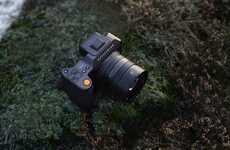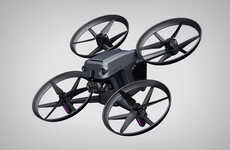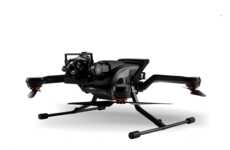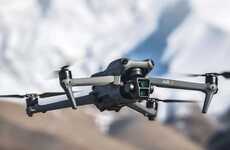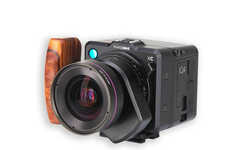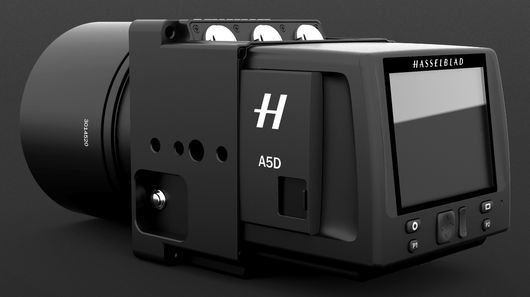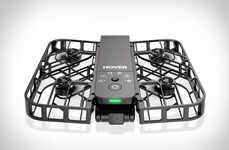
The Hasselblad A5D Aerial Camera is Free of Moving Parts
Rahul Kalvapalle — June 8, 2015 — Tech
References: hasselblad & gizmag
The Hasselblad A5D is an aerial camera that is devoid of moving internal parts. This medium format camera range is designed specifically for aerial photographers and their unique needs.
The top of the camera features three LEMO connectors that allow for up to eight cameras to be synchronized to within 20 microseconds. This sort of synchronization is crucial when using multiple camera images for mapping purposes, in order to avoid post-production complications.
The Hasselblad A5D cameras also features various other features that make it well suited to aerial photographers. For example, they will be made available both with or without infrared filters, allowing for infrared captures from everywhere between 750 to 1,000 nm, which makes them ideal for projects involving environmental surveying and crop management.
The top of the camera features three LEMO connectors that allow for up to eight cameras to be synchronized to within 20 microseconds. This sort of synchronization is crucial when using multiple camera images for mapping purposes, in order to avoid post-production complications.
The Hasselblad A5D cameras also features various other features that make it well suited to aerial photographers. For example, they will be made available both with or without infrared filters, allowing for infrared captures from everywhere between 750 to 1,000 nm, which makes them ideal for projects involving environmental surveying and crop management.
Trend Themes
1. Non-moving Aerial Cameras - Developing aerial cameras without moving internal parts to increase their durability and efficiency.
2. Synchronized Camera Array - Creating multiple camera setups that are able to synchronize within microseconds to aid in mapping and avoid post-production issues.
3. Ir-capable Cameras for Environmental Surveying - Making infrared-capable aerial cameras that are ideal for environmental surveying and crop management projects more accessible.
Industry Implications
1. Aerospace - The development of more efficient, non-moving aerial cameras can revolutionize imaging in the aerospace industry by providing better and more precise data for operations and data collection.
2. Agriculture - New, cost-effective infrared-capable aerial cameras can make data collection and crop management more accessible to farmers and improve the efficiency of large operations.
3. Mapping and Surveying - The synchronized camera array technology can greatly improve the efficiency and accuracy of mapping and surveying by providing multiple high-quality images that are ready for use with minimal post-production work.
3.4
Score
Popularity
Activity
Freshness

